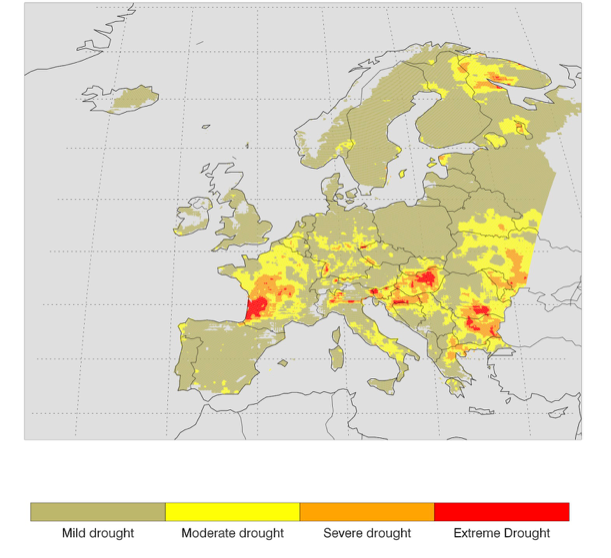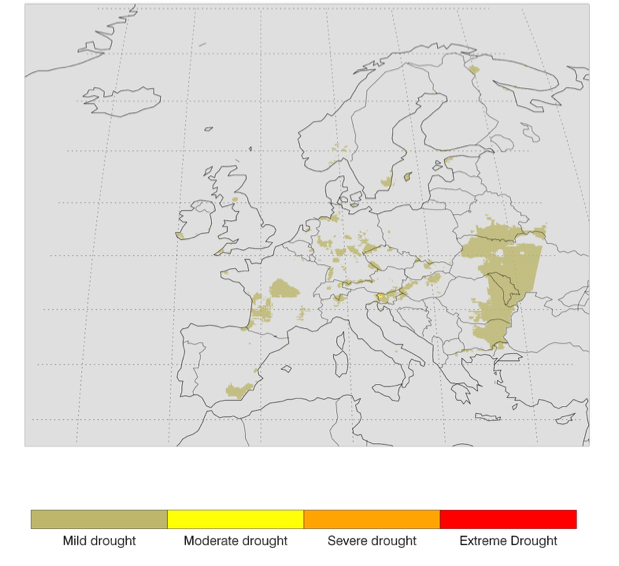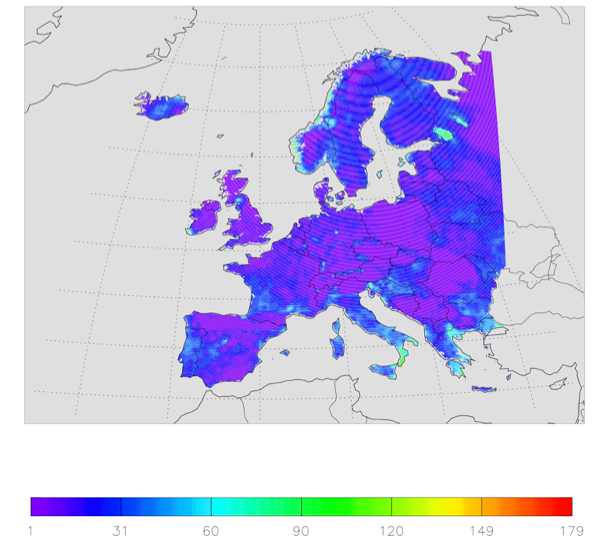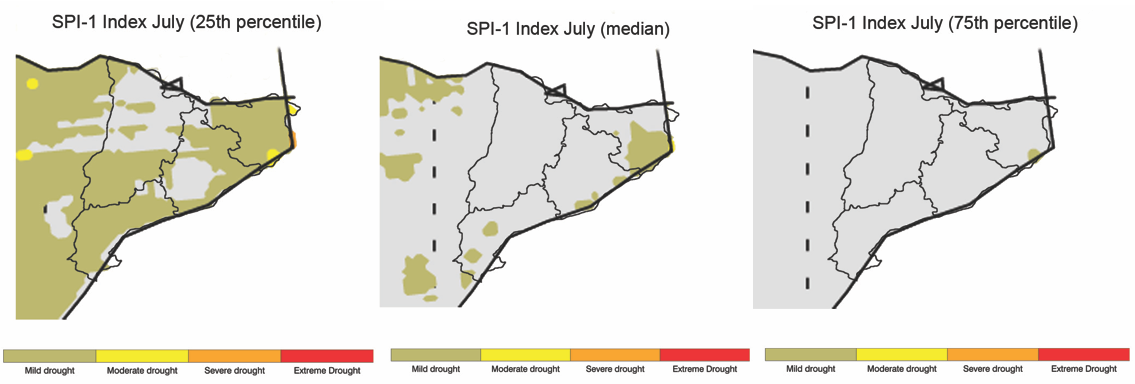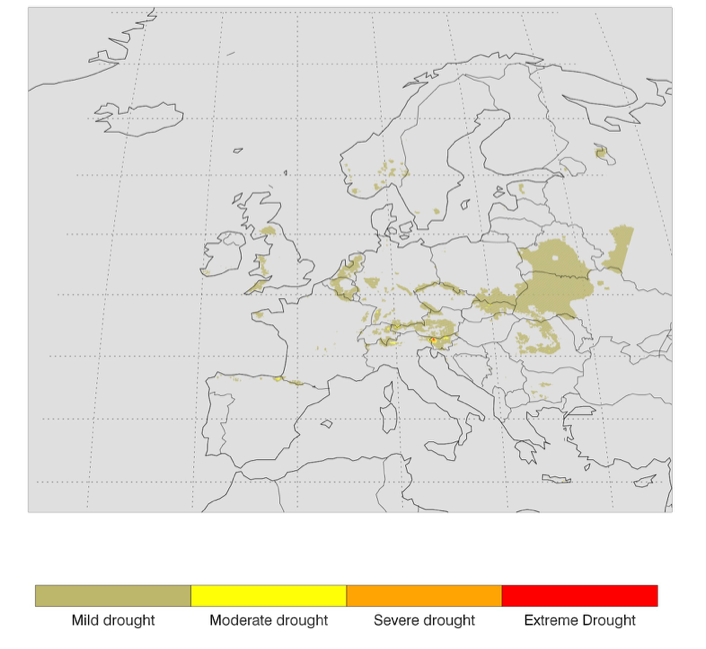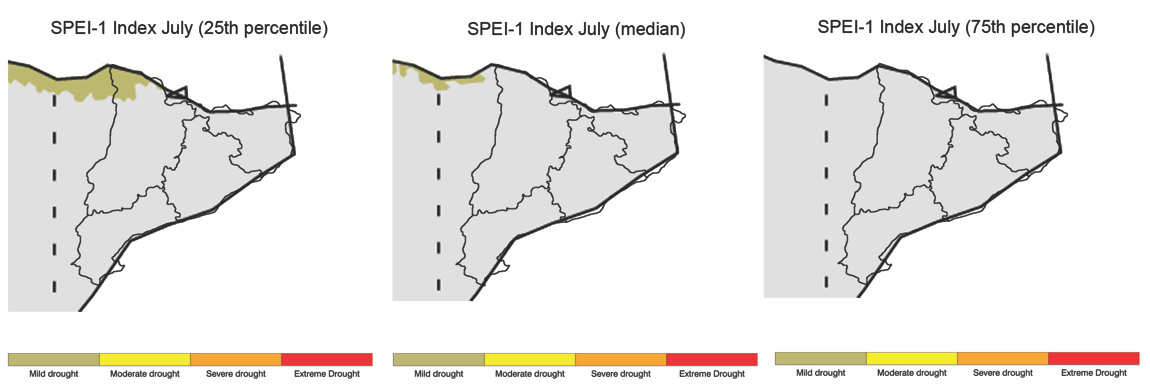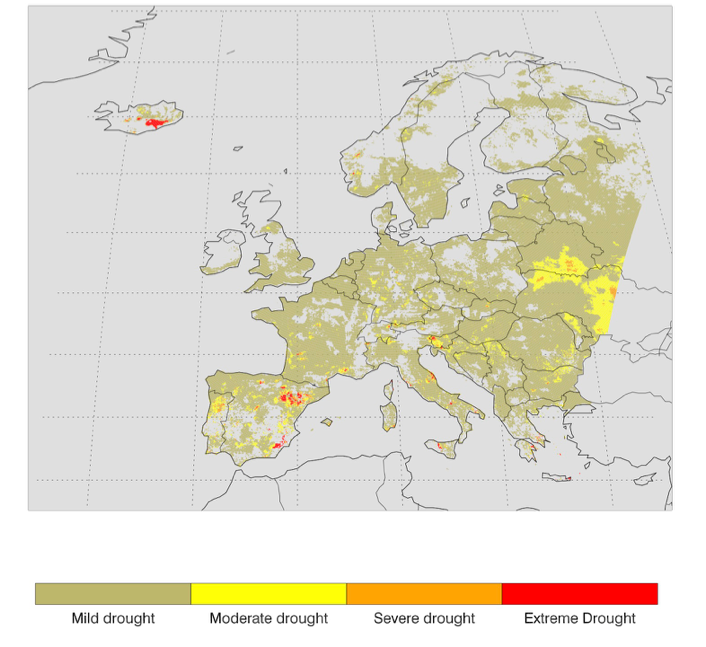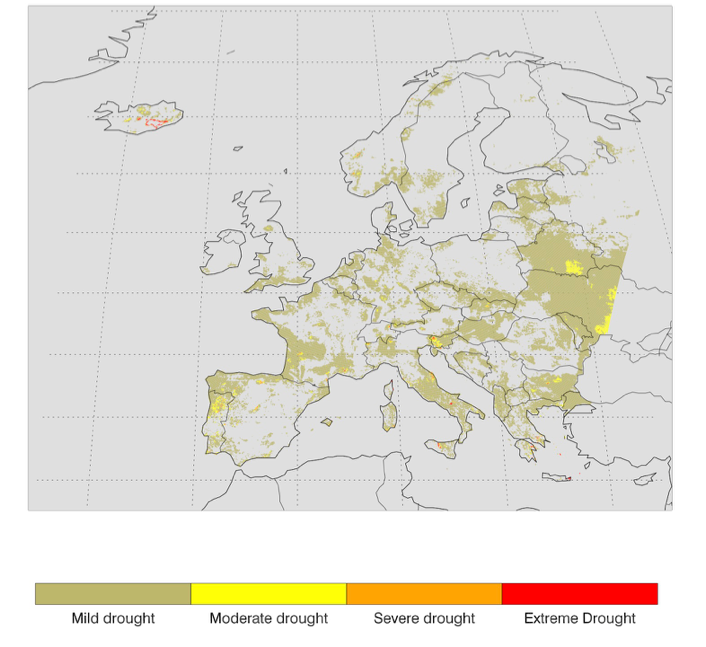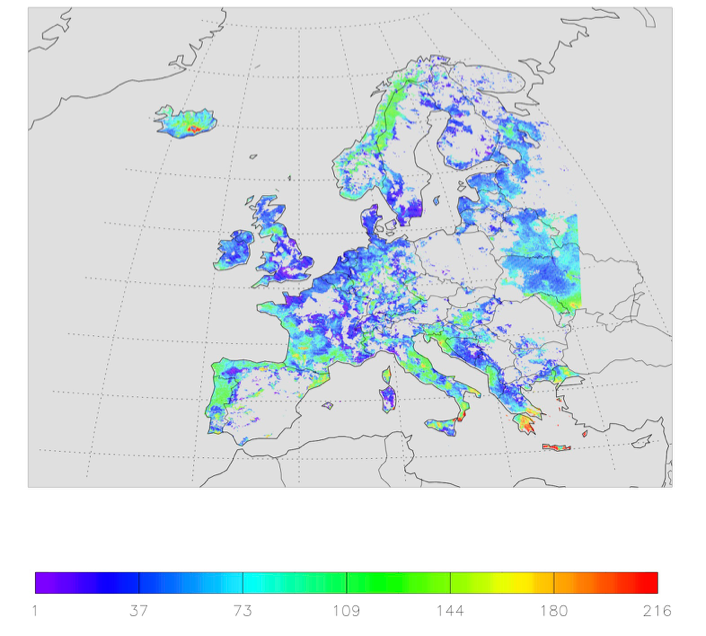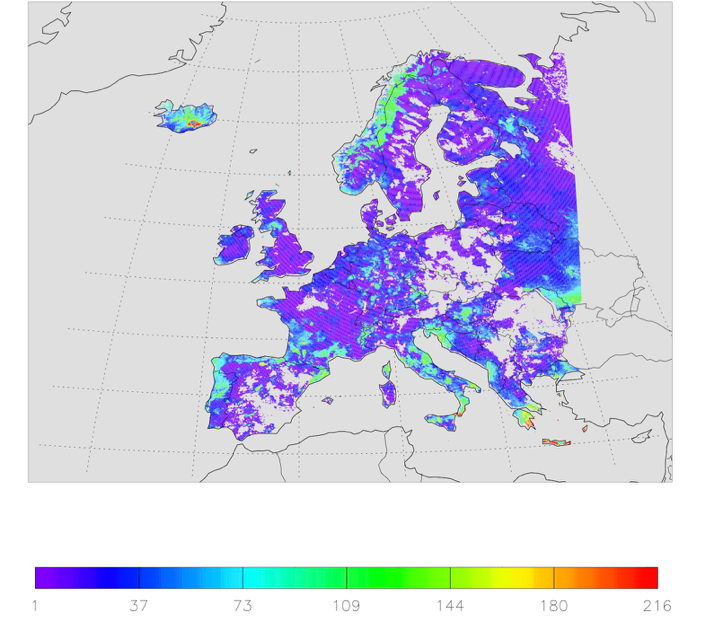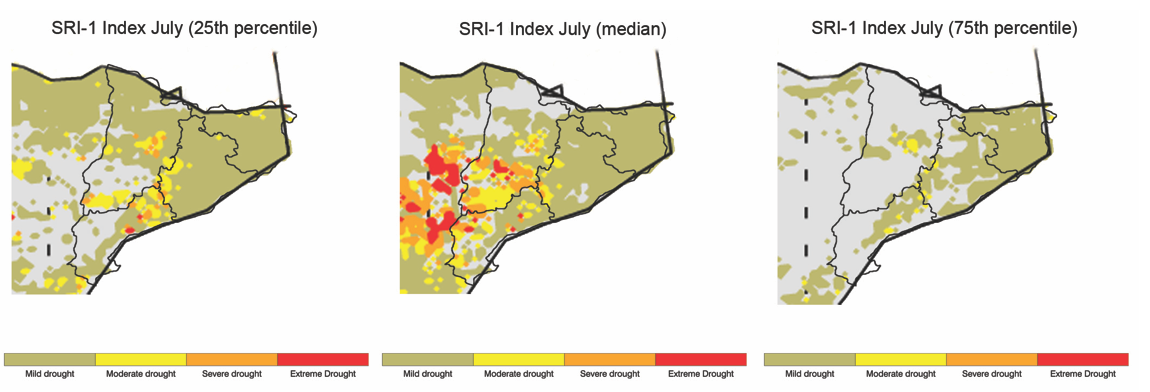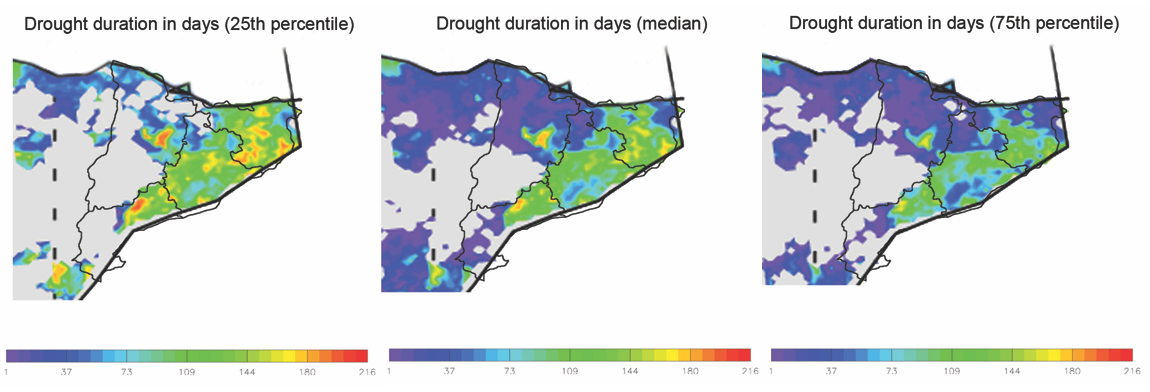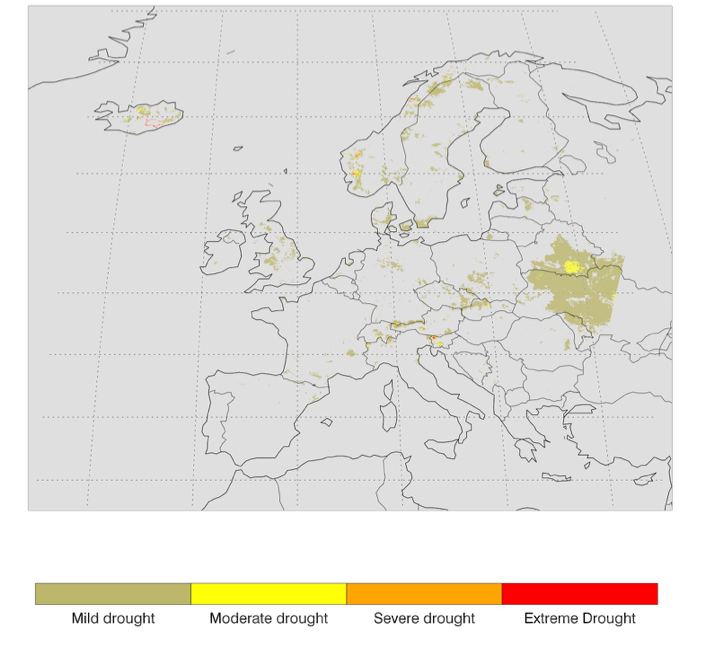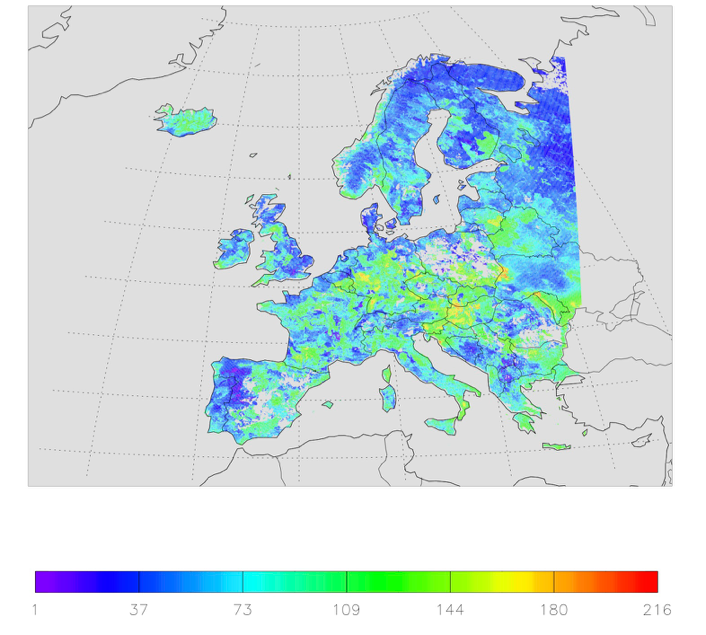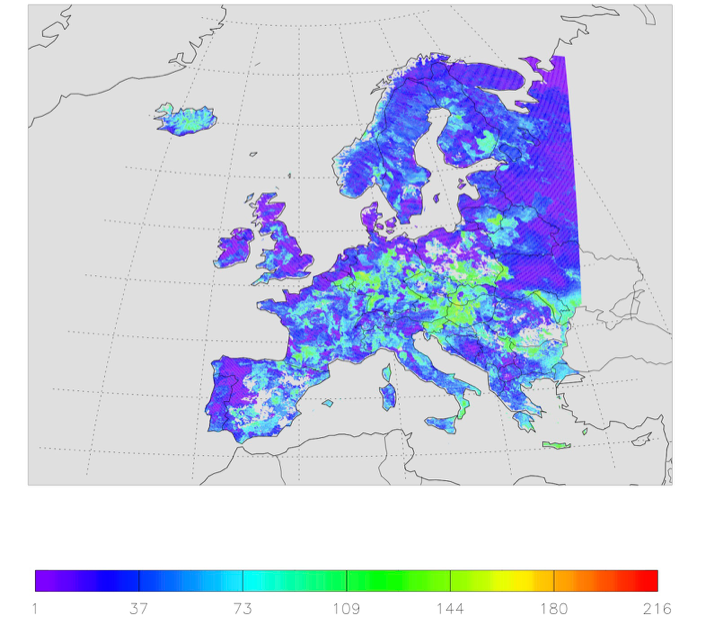Description
The Standardized Drought Method forecasts drought in terms of standardized indices. The standardized indices are used to indicate water deficits (drought) in different domains of the water cycle (precipitation, evaporation, groundwater, runoff). The most well-known is the Standardized Precipitation Index (SPI). The SPI allows determination of the rarity of a forecasted drought at a given time scale of interest for any grid cell across Europe with historic precipitation data (WMO, 2012). The SPI calculation is based on a long-term precipitation record that is fitted to a probability distribution, which is then transformed into a normal distribution so that the mean SPI for the site and desired period is zero. Positive SPI values indicate greater than median precipitation and negative values indicate less than median precipitation. A drought event occurs when the SPI is -1.0 or less. The event ends when the SPI becomes positive. Each drought event, therefore, has a duration defined by its beginning and end, and a severity for each month that the event continues. One preferably needs 30 years of historic monthly values. The SPI is designed to quantify the precipitation deficit for multiple timescales, or aggregation windows, e.g. from 1 month up to 12 months (SPI-1, SPI-12).
The timescales are used to reflect the impacts of drought on different water-related sectors makers (WMO, 2012). Meteorological and soil moisture conditions (agriculture) respond to precipitation anomalies on relatively short timescales, for example 1-6 months (SPI-1 to SPI-6), whereas river flow, reservoirs, and groundwater respond to longer-term precipitation anomalies of the order of 6 months up to 12 months or longer (SPI-6 to SPI-12).
The SPI is based only on precipitation, which is interpreted as a weakness (WMO, 2012). Vicente-Serrano et al. (2010) have included the potential evapotranspiration, which is called the Standardized Precipitation and Evapotranspiration Index (SPEI). The SPI and SPEI are used for multiple timescales to assess drought impacts for different water-related sectors (e.g. Blauhut et al., 2015). However, the correlation between these meteorological indicators is site-specific, because of drought propagation (e.g. drought in groundwater or river flow deviates from the meteorological drought that triggers it). It is anticipated that drought indices addressing groundwater and surface water will be more closely linked to relevant impacts, such as water resources, navigation, aquatic ecosystems. Hydrological knowledge is required to investigate these links (Van Lanen et al., 2016). Standardized Indices have been developed for groundwater by Bloomfield and Marchant (2013), i.e. Standardized Groundwater Index (SGI), and for runoff by Shukla and Wood (2008), i.e. Standardized Runoff Index (SRI).




